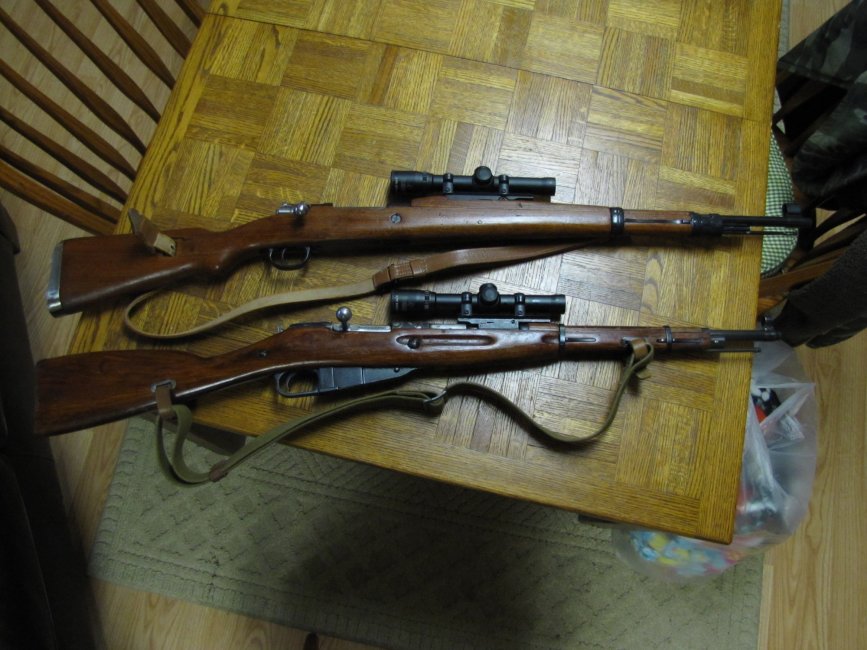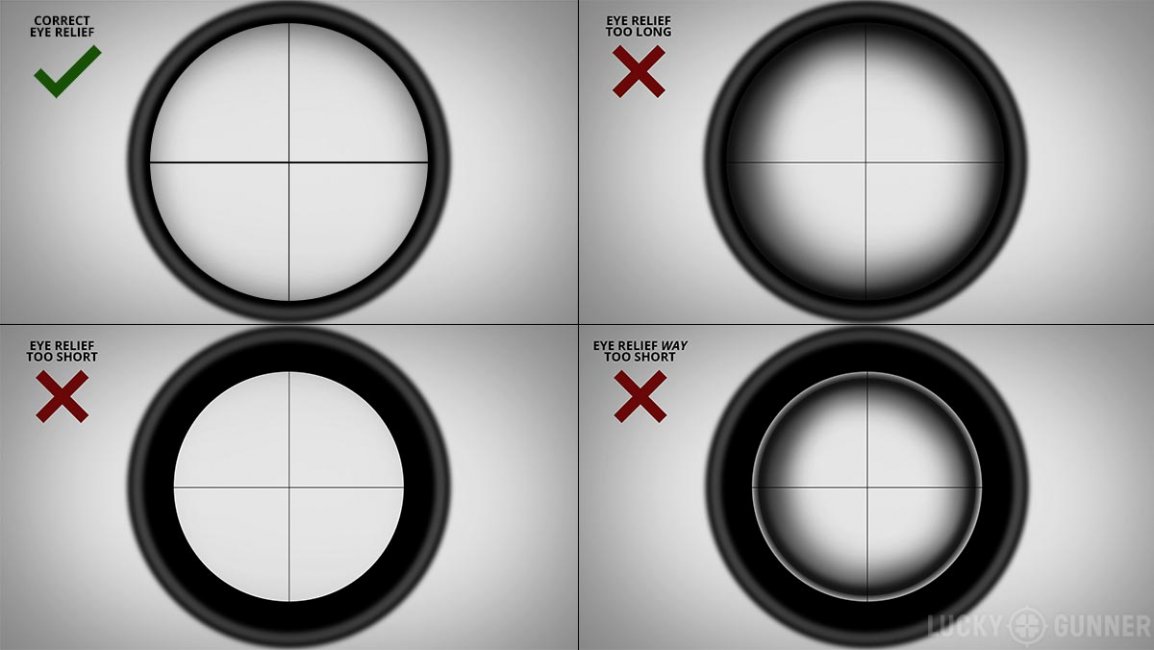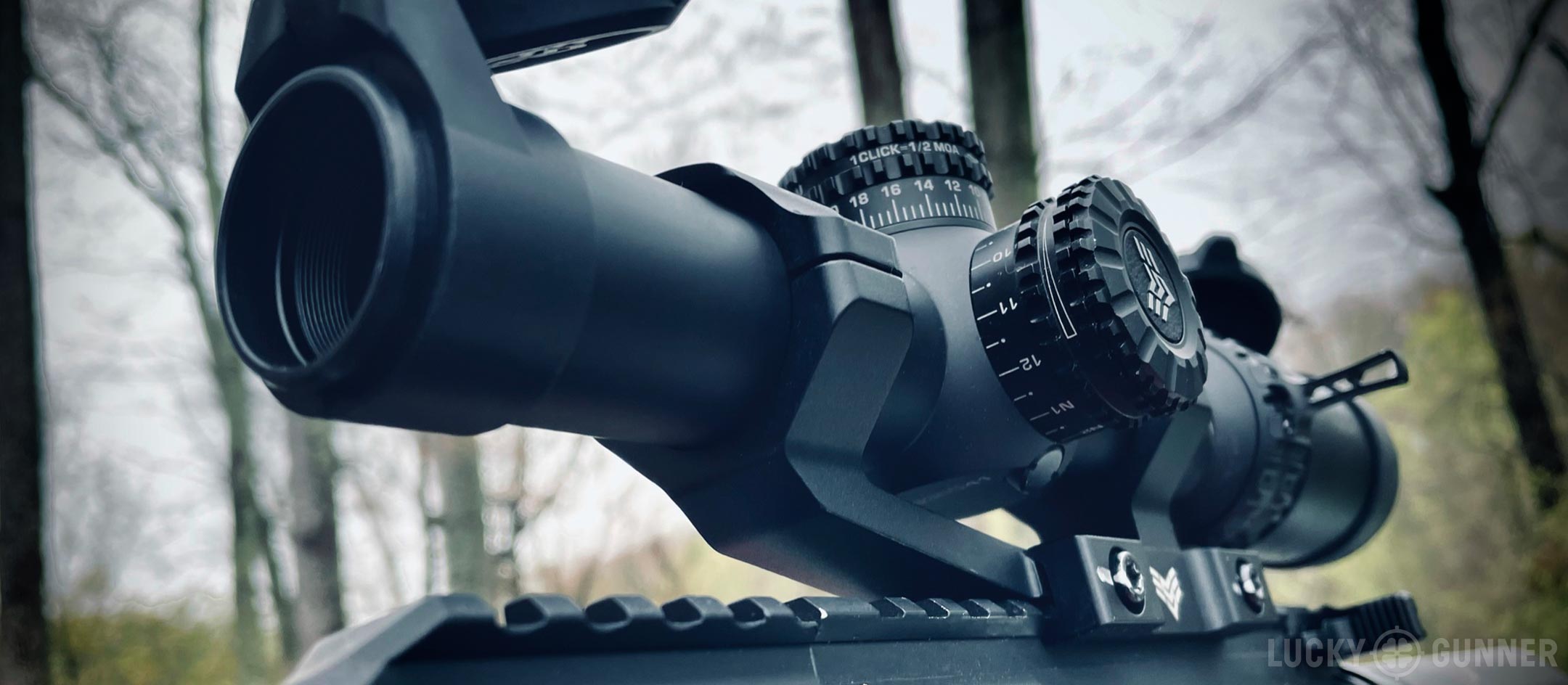-
Be sure to read this post! Beware of scammers. https://www.indianagunowners.com/threads/classifieds-new-online-payment-guidelines-rules-paypal-venmo-zelle-etc.511734/
You are using an out of date browser. It may not display this or other websites correctly.
You should upgrade or use an alternative browser.
You should upgrade or use an alternative browser.
Optic placement
- Thread starter Lpherr
- Start date
The #1 community for Gun Owners in Indiana
Member Benefits:
Fewer Ads! Discuss all aspects of firearm ownership Discuss anti-gun legislation Buy, sell, and trade in the classified section Chat with Local gun shops, ranges, trainers & other businesses Discover free outdoor shooting areas View up to date on firearm-related events Share photos & video with other members ...and so much more!
Member Benefits:
Preferably scope, but both if you would like to share.red dot or scope?
Eventually I would like to get both.
With a scope, it's all about the eye relief for me. I want the fullest, clearest field of view without having to move my head around to find it. Same with a red dot to some degree, but there seems to be more lee-way with the dot.
So you run your scope back? I think that's what I read. Back=fuller FOV and forward=more target focus?With a scope, it's all about the eye relief for me. I want the fullest, clearest field of view without having to move my head around to find it. Same with a red dot to some degree, but there seems to be more lee-way with the dot.
Depends on the scope, the rifle, the cheek weld I can get on the rifle. In general, that's true, but it varies depending on the combination of those factors. And then of course there's scout scopes (long eye relief), like these.So you run your scope back? I think that's what I read. Back=fuller FOV and forward=more target focus?

For a scope, prism sight, or magnifier for a red dot, there's not really "target oriented" vs "full field of view". There's what's called an "eye box". When your eye is in the box, the image/FOV fills the lens. If your eye is out of the box, you'll see a black border around the image.
Scout scopes are the same, they just have the eye-box much farther back so they can be mounted farther forward. More expensive scopes will have a larger eye box and/or a wider eyebox. Cheap scopes will have a narrow eyebox close to the scope (bad on hard-recoiling rifles).
First you find your natural cheek position on the rifle, then you position the scope so the eyebox matches where your eye is. Rule of thumb/starting point if the LOP of the gun matches you is to put the lens just above your main hand thumb or above the charging handle for ARs.
The only time there's a "target oriented" to positioning the scope is if you're punching paper competitively and want to make sure you're centered on the lens, you can back off from the eyebox and let the black ring narrow down to the center of the crosshair.
With a normal red dot (not prisms), there's no focal "eye box" to worry about. You can mount it as far or near as you like. The closer the dot is to you, the larger the dot will appear (hence why rifle dots are often 1-3moa and pistol dots are usually 3-8moa (I've heard of them as big as 16!). Farther away will block less of your field of view and be more precise (because the dot's smaller). I usually mount the dot on my ARs on the front edge of the receiver because the handguard can depart from true to the barrel.
Scout scopes are the same, they just have the eye-box much farther back so they can be mounted farther forward. More expensive scopes will have a larger eye box and/or a wider eyebox. Cheap scopes will have a narrow eyebox close to the scope (bad on hard-recoiling rifles).
First you find your natural cheek position on the rifle, then you position the scope so the eyebox matches where your eye is. Rule of thumb/starting point if the LOP of the gun matches you is to put the lens just above your main hand thumb or above the charging handle for ARs.
The only time there's a "target oriented" to positioning the scope is if you're punching paper competitively and want to make sure you're centered on the lens, you can back off from the eyebox and let the black ring narrow down to the center of the crosshair.
With a normal red dot (not prisms), there's no focal "eye box" to worry about. You can mount it as far or near as you like. The closer the dot is to you, the larger the dot will appear (hence why rifle dots are often 1-3moa and pistol dots are usually 3-8moa (I've heard of them as big as 16!). Farther away will block less of your field of view and be more precise (because the dot's smaller). I usually mount the dot on my ARs on the front edge of the receiver because the handguard can depart from true to the barrel.
For a scope, prism sight, or magnifier for a red dot, there's not really "target oriented" vs "full field of view". There's what's called an "eye box". When your eye is in the box, the image/FOV fills the lens. If your eye is out of the box, you'll see a black border around the image.
Scout scopes are the same, they just have the eye-box much farther back so they can be mounted farther forward. More expensive scopes will have a larger eye box and/or a wider eyebox. Cheap scopes will have a narrow eyebox close to the scope (bad on hard-recoiling rifles).
First you find your natural cheek position on the rifle, then you position the scope so the eyebox matches where your eye is. Rule of thumb/starting point if the LOP of the gun matches you is to put the lens just above your main hand thumb or above the charging handle for ARs.
The only time there's a "target oriented" to positioning the scope is if you're punching paper competitively and want to make sure you're centered on the lens, you can back off from the eyebox and let the black ring narrow down to the center of the crosshair.
With a normal red dot (not prisms), there's no focal "eye box" to worry about. You can mount it as far or near as you like. The closer the dot is to you, the larger the dot will appear (hence why rifle dots are often 1-3moa and pistol dots are usually 3-8moa (I've heard of them as big as 16!). Farther away will block less of your field of view and be more precise (because the dot's smaller). I usually mount the dot on my ARs on the front edge of the receiver because the handguard can depart from true to the barrel.

What russc2542 said...
Thanks for the information so far.
I'm completely new to rifles, and I try to gather information, before I do the wrong thing.
Youtube, and other video sources, are only so reliable. I like to ask here, among people I trust.
One of these days, I'll get to one of the meet-ups, and I can entertain everyone with my stupid newbie questions.
I'm completely new to rifles, and I try to gather information, before I do the wrong thing.
Youtube, and other video sources, are only so reliable. I like to ask here, among people I trust.
One of these days, I'll get to one of the meet-ups, and I can entertain everyone with my stupid newbie questions.
I'll have to get a scope, so I understand the FOV, eye box, etc.What russc2542 said...
It's hard to follow, without a an aid in hand. I learn best, by having whatever I'm learning at hand, and following along with instruction.
The hands on approach, if you will.
It's hard to find the right balance of info and brevity when you aren't sure of the audience.I'll have to get a scope, so I understand the FOV, eye box, etc.
It's hard to follow, without a an aid in hand. I learn best, by having whatever I'm learning at hand, and following along with instruction.
The hands on approach, if you will.
cliff-notes:
-scopes, Prism sights, magnifiers: there's a fixed distance your eye has to be from the scope. Find where your face rests on the stock naturally then position the optic to match.
-red dots can be any distance from your eye, lots of personal preference.
You're right that scope placement takes some practice/experience. You'll place it where you think is right then find after some classes and practice you can make it better.
pict showing proper eye relief through a magnified scope, from the following site how to mount a scope




How to Mount a Rifle Scope - Lucky Gunner Lounge
This is just about everything the average shooter could possibly want to know about mounting a scope including the "why" behind each step.
www.luckygunner.com
All the advice above is excellent, the only thing I might add is to make sure and check out different scopes. My LGS has a stock just for shoulder different scopes.
This gives you an opportunity to see different eye reliefs. Generally a scope with great eye relief will cost more money, and IMO a scope with less eye relief is handicapping you.
I never dreamed I’d buy a $1200 scope. Until the guy said here, look through this. The eye relief was great, and the housing just disappeared like no other.
So be careful, but don’t shortchange yourself.
This gives you an opportunity to see different eye reliefs. Generally a scope with great eye relief will cost more money, and IMO a scope with less eye relief is handicapping you.
I never dreamed I’d buy a $1200 scope. Until the guy said here, look through this. The eye relief was great, and the housing just disappeared like no other.
So be careful, but don’t shortchange yourself.
A picture's worth a thousand words, good find!pict showing proper eye relief through a magnified scope, from the following site how to mount a scope
View attachment 226291

How to Mount a Rifle Scope - Lucky Gunner Lounge
This is just about everything the average shooter could possibly want to know about mounting a scope including the "why" behind each step.www.luckygunner.com
Glass is a deep rabbit hole. I remember the day my Leupold showed up... I'd been shooting a $300 6-24 ACME scope through 2 matches in a row (oof) and had a headache from the eyestrain. Got home and oh look there's a box with my name on the porch. opened it up, looked through that $1300 3-15 and OMG I CAN SEE EVERYTHING! (Also, a 7mm mag shook the innards apart on the ACME in 3 shots. I'm pushing 100 in my .375H&H with the Leupold)All the advice above is excellent, the only thing I might add is to make sure and check out different scopes. My LGS has a stock just for shoulder different scopes.
This gives you an opportunity to see different eye reliefs. Generally a scope with great eye relief will cost more money, and IMO a scope with less eye relief is handicapping you.
I never dreamed I’d buy a $1200 scope. Until the guy said here, look through this. The eye relief was great, and the housing just disappeared like no other.
So be careful, but don’t shortchange yourself.
With a scope I find what it's eye relief is, then I get my cheek weld and measure the distance from my eye to where the lense of the scope should be. Do a test or two to make sure that is the proper distance for me. Then tighten everything down with lock tight.
This is the video I always post when people have scope related questions with mounting and scope position. There is lot a good information here that works for pretty much any magnified optic or rifle (not just long range as the title suggests).
What russc2542 said.....
After the above comments are meet, my first objective is the scope being in a natural and comfortable position (height and fore to aft positioning) so you don't search for the proper eye relief when addressing the gun. This may vary depending upon how the gun is used (bench/shoulder/tree stand/etc). My second objective is as close to the bore as possible.
After the above comments are meet, my first objective is the scope being in a natural and comfortable position (height and fore to aft positioning) so you don't search for the proper eye relief when addressing the gun. This may vary depending upon how the gun is used (bench/shoulder/tree stand/etc). My second objective is as close to the bore as possible.
Hawkeye7br
Expert
I didn't watch any of the videos, perhaps this was covered. There is about an inch difference, perhaps more, in scope placement when shooting from the bench vs offhand. Too many new shooters will sight in their optic from a bench, only to discover their eye is too far away when shooting from standing or with added clothes for hunting. Just my .02, ymmv.
Staff online
-
GodFearinGunTotinSuper Moderator
-
mom45Momerator
Members online
- 2tonic
- Luckyoldguy
- GSPBirdDog
- Timjoebillybob
- tca1352
- Tomahawkman
- Vermin8r
- indyblue
- Noble Sniper
- morve80
- agentcolt
- JohnP82
- Butch627
- bsmithg19
- Born2vette
- GodFearinGunTotin
- DestructionDan
- Glocktard
- Plumbous
- Triton
- ranger391xt
- mac45
- bub74
- Meatstick
- Judamonster
- Pop2you
- BigBoxaJunk
- turnandshoot4
- Colt556
- Piezak
- Lmo1131
- MrSmitty
- Georgemartinn
- Midwestjimbo
- mom45
- barber613
- Chalky
- bcoe5371
- jake 2000
- Wolffman
- adam
- jy951
- Brando
- JAL
- Got SIG?
- knutty
- user11230706
- Mr24g
- Avi8tor
- courier6
Total: 1,859 (members: 59, guests: 1,800)




